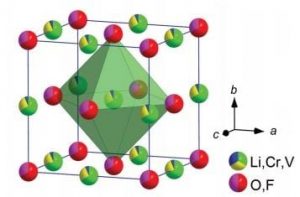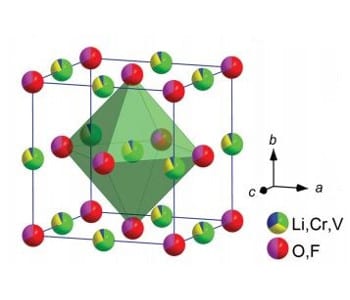 Researchers in Germany and Russia have developed a disordered cathode material for Li-ion batteries which leads to enhanced voltage and cycling performance. The oxyfluoride-based intercalation cathode material shows high practical specific capacity, beyond that of classical systems currently known.
Researchers in Germany and Russia have developed a disordered cathode material for Li-ion batteries which leads to enhanced voltage and cycling performance. The oxyfluoride-based intercalation cathode material shows high practical specific capacity, beyond that of classical systems currently known.
Li-ion batteries play an important role as power sources for portable electronics, smart-grid technologies and electric vehicles. However, the energy storage capacity which has been achieved with Li-batteries may soon fall short of what is required for many future applications. One significant limitation to Li- ion battery storage capacity is electrode performance. With the aim of improving this, the researchers from Karlsruhe Institute of Technology (KIT), Germany and Southern Federal University, Russia, have developed an innovative oxyfluoride-based intercalation cathode material, in which lithium cations are highly mobile. The disordered rock salt (DRS) structure, synthesized via ball-milling, avoids many of the problems associated with Li+ storage in a crystal framework, in which structural defects can impede Li+ diffusion.
The cathode material demonstrated a reversible Li+ storage of approximately 1.6 to 1.8 Li+ per unit formula, and corresponding high specific capacities of 360–410 mAh g-1. These results suggest that these intercalation cathode materials may be fit to rival the existing cathode materials used in Li-ion batteries. The researchers hope to improve the cost-effectiveness and environmental-friendliness of the oxyfluoride-based intercalation cathode material to develop an advanced Li-ion battery for the energy storage requirements of the future.
Advanced Science is a new journal from the team behind Advanced Materials, Advanced Functional Materials, and Small. The journal is fully Open Access and is free to read now at www.advancedscience.com.

















